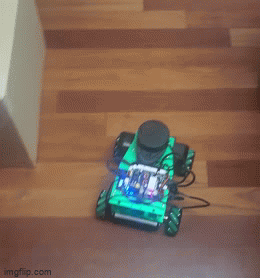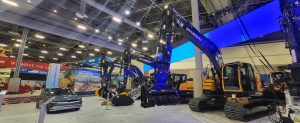
ROS (Robot Operating System) has revolutionized robotics development by offering a modular framework. Among its many components, Navigation Nodes stand out for enabling robots to move intelligently and autonomously within environments. In this guide, we’ll delve into the intricate world of Navigation Nodes within ROS, exploring their significance, key components, implementation, advanced techniques, and real-world applications.
Understanding ROS Navigation Stack
At the core of ROS navigation lies the Navigation Stack, comprising various layers: Localization, Mapping, Path Planning, and Motion Control. This layered architecture ensures a systematic approach to autonomous navigation, allowing robots to perceive their surroundings, plan paths, and execute movements effectively.
Key Components of Navigation Nodes

- AMCL (Adaptive Monte Carlo Localization): This probabilistic localization technique allows robots to estimate their positions accurately using sensor data. AMCL plays a pivotal role in ensuring the robot’s awareness of its location within the environment.
- SLAM (Simultaneous Localization and Mapping): SLAM algorithms enable robots to create maps of unknown environments while simultaneously localizing themselves within those maps. Gmapping, Cartographer, and other SLAM methods facilitate this crucial mapping process.
- Global and Local Planners: Global planners, such as A* and Dijkstra, focus on finding optimal paths from start to goal locations on a map. Local planners ensure real-time obstacle avoidance, enabling robots to navigate around dynamically changing obstacles.
- Costmaps: These grids represent the traversability and cost of moving through different areas of the environment. Dynamic costmaps adapt to changes in the surroundings, allowing robots to make informed navigation decisions.
- Navigation Messages and Actions: ROS uses specialized message types for navigation tasks, facilitating communication between nodes. Actionlib supports the execution of long-duration tasks, crucial in navigation scenarios.
Advanced Navigation Techniques

Enhancing navigation often involves integrating multiple sensors, like LIDAR or depth cameras, for more robust perception. Behavior-based navigation techniques and leveraging machine learning algorithms further improve a robot’s decision-making abilities in complex environments.
Best Practices and Troubleshooting
Developers benefit from adhering to best practices during navigation node development, minimizing errors and optimizing performance. Troubleshooting strategies help address common issues encountered while working with navigation nodes, ensuring smoother development cycles.
Real-world Applications
Navigation nodes find applications in diverse real-world scenarios. Robots in logistics, healthcare, agriculture, and manufacturing industries leverage ROS navigation capabilities for tasks ranging from warehouse navigation to autonomous delivery.
| Industry / Technology | Application of Navigation Nodes |
|---|---|
| Logistics and Warehousing | Autonomous robots navigate warehouses for inventory management. |
| Autonomous Vehicles | Self-driving cars use navigation nodes for safe and efficient travel. |
| Agriculture | Drones and autonomous tractors navigate fields for precision farming. |
| Healthcare | Hospital robots navigate corridors for delivery or assistance tasks. |
| Manufacturing | Automated guided vehicles (AGVs) navigate factory floors for logistics. |
| Retail | Robots assist with inventory tracking and customer service in stores. |
| Space Exploration | Autonomous rovers navigate planetary surfaces for scientific missions. |
Example of Navigation Node in ROS:
The move_base node subscribes to information from sensors and global/local planners, processes this data, and generates velocity commands to direct the robot’s movement. It handles the complexity of navigation by interfacing with other nodes, ensuring the robot navigates while avoiding obstacles and following the planned trajectory.

In Conclusion
The Navigation Nodes within ROS paint a vivid picture of the system’s elegance and adaptability. They form the backbone of robotic autonomy, allowing machines to navigate intricate environments with precision and intelligence. Understanding these nodes’ interplay—such as AMCL, SLAM, planners, and costmaps—offers a glimpse into the intricate workings of autonomous robots.
Our journey through the world of ROS Navigation Nodes is just the beginning of a vast landscape awaiting exploration. ROS, as the beating heart of robotics innovation, opens doors to endless possibilities in various industries. It’s a catalyst for revolutionizing logistics, healthcare, agriculture, and more.
Whether you’re an enthusiast or a beginner in the realm of ROS, the quest for knowledge fuels our progress. At NICE FUTURE INC., we stand ready to support and guide your exploration, offering insights, expertise, and solutions in the ever-evolving world of technology.
Join us as we continue to unveil the depths of ROS, uncovering its treasures and witnessing the fusion of robotics into our daily lives. Together, let’s shape a future where innovation and technology converge to create a better world. 🤖🌐✨
Subscribe to our newsletter!




